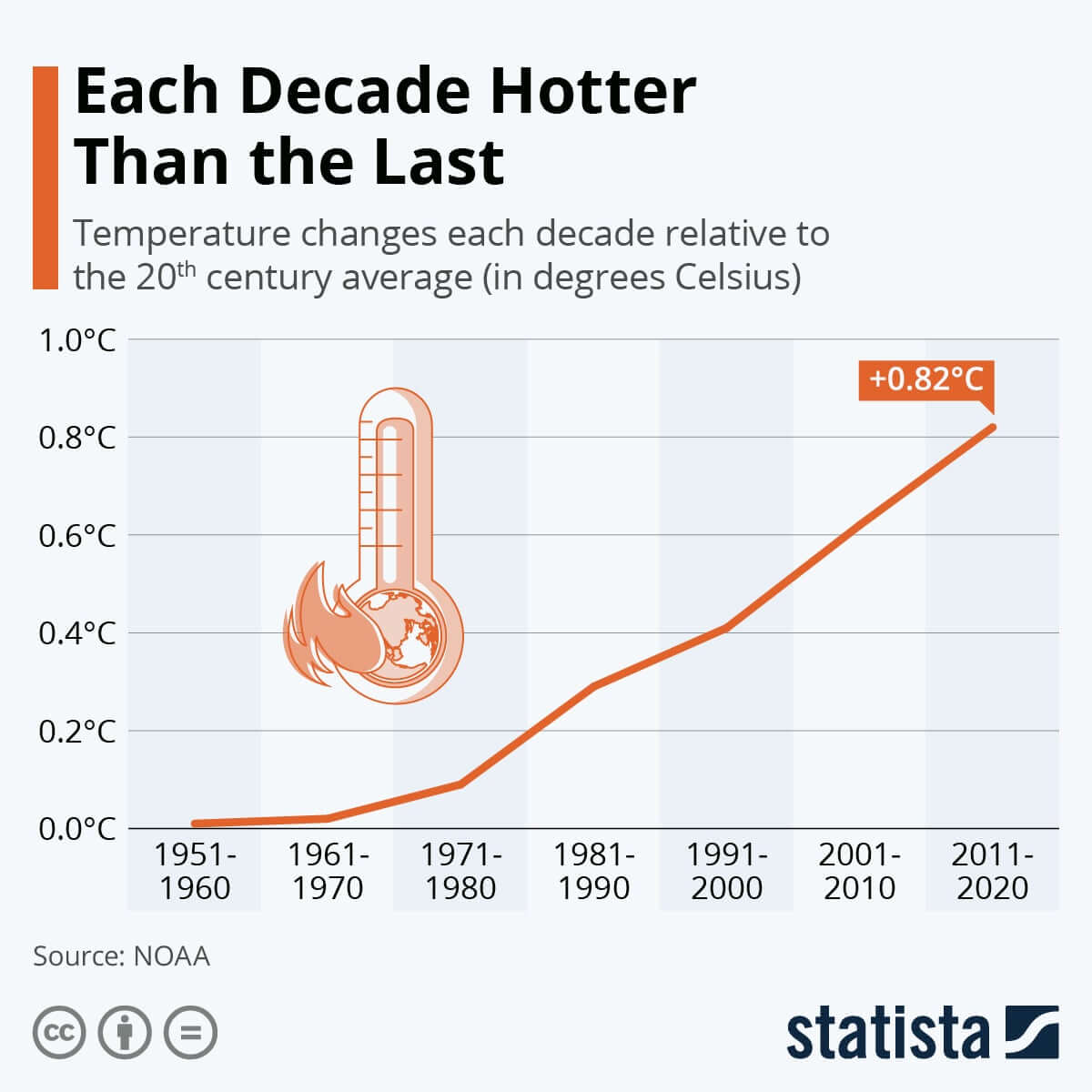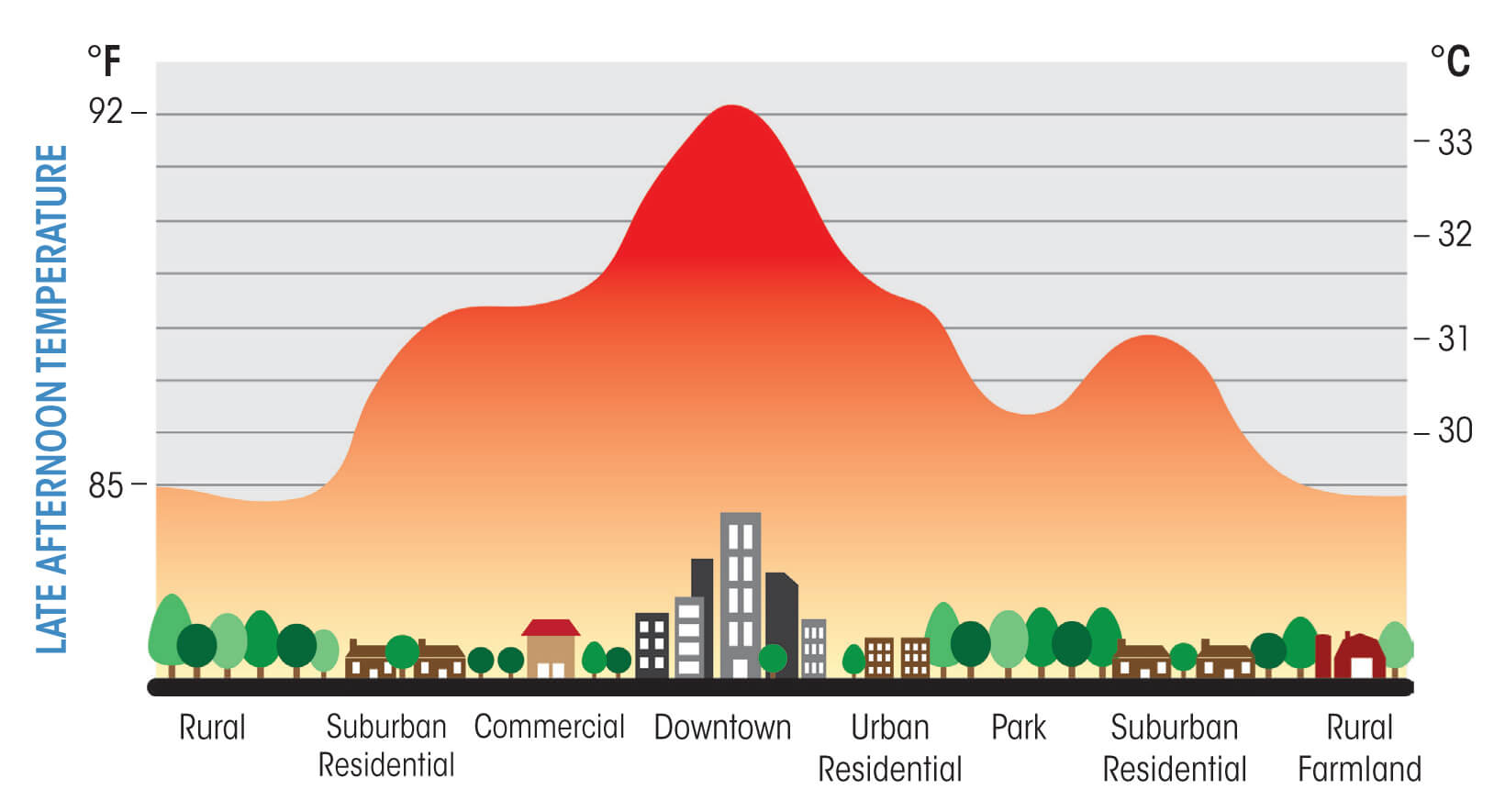I really have to question why we are growing ever bigger cities in areas of the world that are incompatible with normal living conditions:
India: 46 degrees in March.
Phoenix, Arizona: 46 degrees in June.
Spain & Southern France: 43 degrees in June.
Some countries are now delivering solutions to lower temperatures, today we will illustrate the simple techniques that are having some effect.

Even here, in 2020 alone, the UK government estimated that 2556 people died as a result of heatwaves between June and August, 87% aged over 65. The image of Britain as a grey, rainy country has changed. Today, temperatures are set to rise to 34C.
Extreme heat has always been known to adversely affect the eldery and those with chronic health conditions, largely due to the increased cardiovascular strain placed on the body. In fact, extreme temperatures can be linked to 17 causes of death, which range from breathing issues all the way to suicide. Alarmingly, in Mexico, which often reaches temperatures of 28C in Spring and Summer, suicide rates increase 2.1% when temperatures 1 degree over average.
Other global statistics are also shocking. In just 2019, 1.69 million deaths could be attributed to extreme heat worldwide, and, between 1980 and 2016, the amount of global deaths caused by high temperatures increased 74%. As the world continues to heat up due excess carbon and greenhouse gas emissions, these figures are sure to rise, as more people around the globe will find themselves living in oppressive temperatures which are dangerous to their health. At the current rate of temperature increase, a child born in 2019 will be living in a world that’s 4 degrees warmer by their 71st birthday.
The rapid urbanisation seen in all continents isn’t helping. As cities expand, their concrete streets and infrastructure trap heat, leading to the ‘urban heat island’ effect (something we’ve discussed in a previous article). An example: London temperatures are often a few degrees higher than the UK’s other regions. We are now living in areas where it is unnatural to live without air conditioning.

There are roughly 2 billion AC units across the world, and that number is estimated to rocket up to 5 billion by 2050. That’s more than one AC unit for every two people on earth. All these air conditioners running during hot weather releases significant carbon emissions, which continue to contribute to the warming of the earth. They also put severe pressure on city electrical grids, with blackouts being a frequent consequence. In fact, blackout events have doubled across major US cities since 2015.
Increasing temperatures have acted as a kick in the backside of many cities to finally create projects and initiatives to beat the heat. On the 14th June, the IFRC launched its first Heat Action Day across the globe, partnering with 50 cities to hold awareness-raising events about the risks of extreme heat. The IFRC has also launched the C40 Cool Cities Network, to develop heat resistant strategies and heat-proof climate action plans around the world.
One of these cities is Phoenix, Arizona. During the Summer months, Phoenix temperatures easily hit above 40C and its most recent heat wave, happening right now this June, hasn’t seen nightly temperatures fall below 26C. To battle this, Phoenix’s Street Transportation Department and Office of Sustainability announced in 2021 their Cool Pavement Pilot Program. This will see pavements covered with reflective coating, to stop the concrete from absorbing as much heat from the Sun. The cool pavement saw temperatures 10.5-12F lower than traditional asphalt.
In a similar vein, India has started a Cool Roofs Program to protect people from the heat. Just this March, the country’s capital, New Delhi, saw record-high temperatures of 46.7C. Much like Phoenix’s cool pavement, India’s cool roofs reflect sunlight, and can decrease indoor temperatures by 2-5C.
Heat waves are nothing new but, instead of being seen as a short interlude of beach days and ice creams in the park, they are now something to be prepared for, something that will inevitably leave disruption and inconvenience in their wake.
And extreme temperatures don’t affect everyone equally, either. Whilst those with financial stability can sit inside air conditioned houses and offices, people living below the property line are 50% more exposed to urban heat. Imagine sitting in a small house with no air conditioning on a hot and humid 45 degree day – many don’t have to imagine, that’s their reality.
Whilst cities across the globe are taking the initiative in mitigating the risks and effects of extreme heat, the root cause still remains. The world needs to get serious about its carbon emissions. There’s no point in sitting complaining in front of the AC vent unless immediate action is taken to achieve net-zero by 2050. If we continue the way we are, things are just going to get hotter and hotter.
Urban heat isn’t just an inconvenience anymore. It’s killing people, in the millions. Too many corporates are continuing to pump excess levels of carbon dioxide and greenhouse gases into the atmosphere, and people are dying because of it.
Think about that next time you enjoy your ice cream on a 30 degree day.

Share your thoughts
No Comments
Sorry, the comment form is closed at this time.